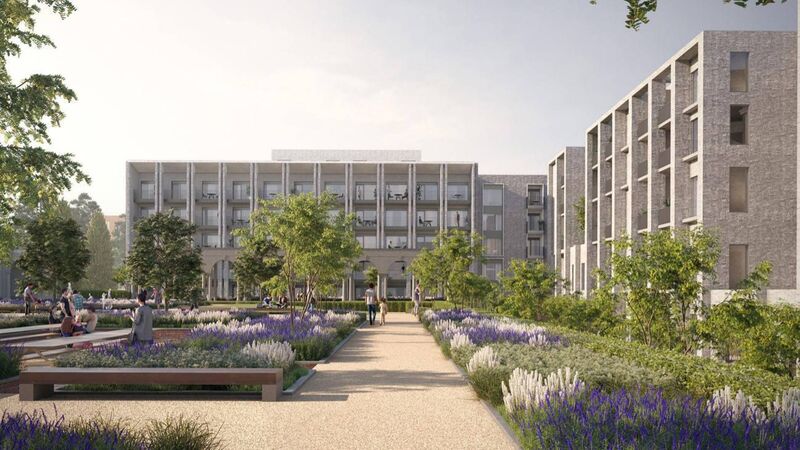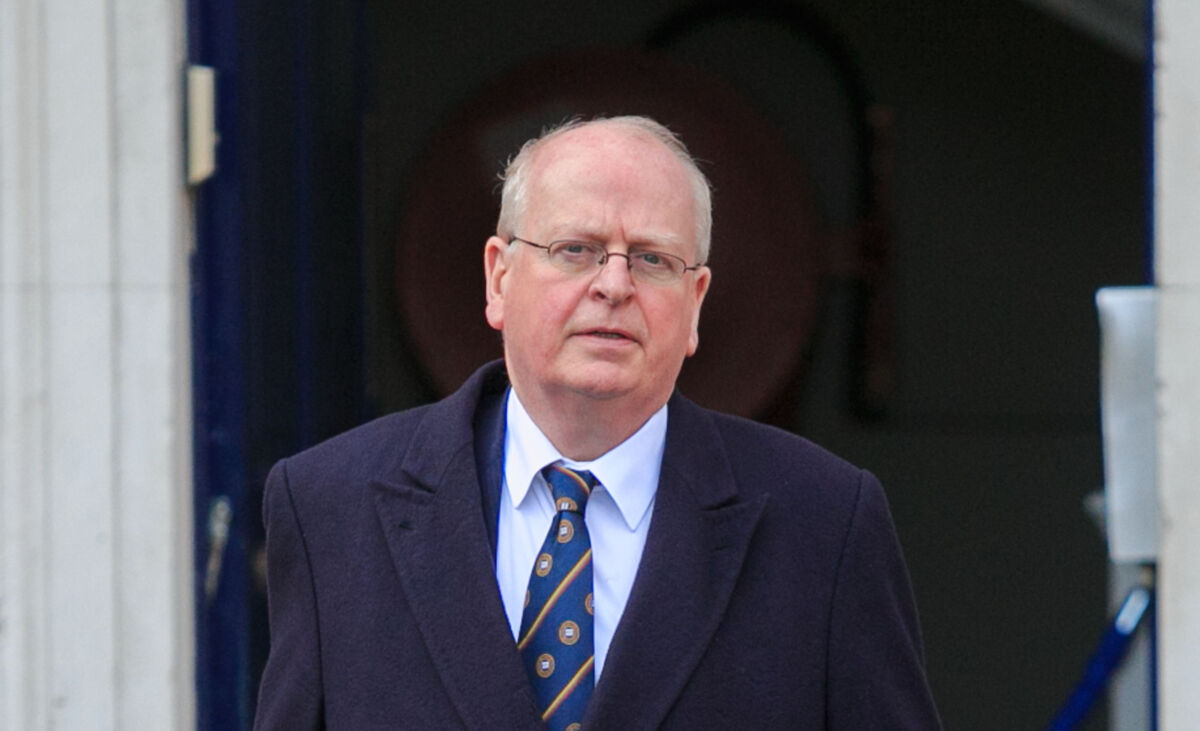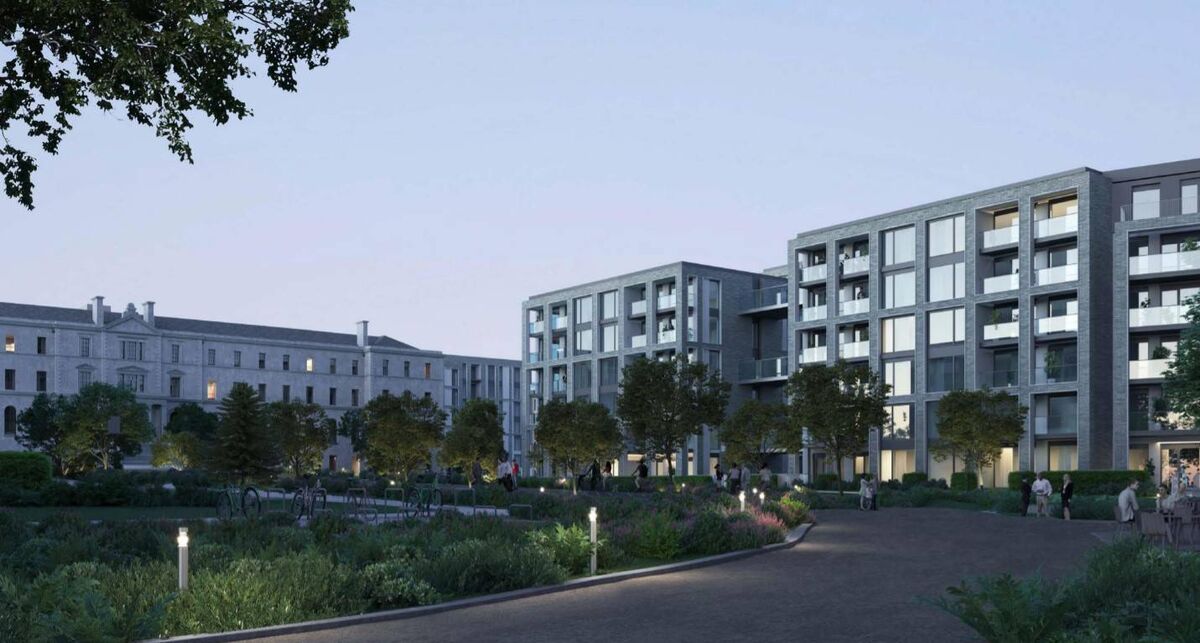Mick Clifford: Housing is more than just a numbers game

An artist's impression of the development planned for Drumcondra, fearing some 1,592 housing units.
Numbers matter greatly in politics. Numbers are easily understood, easily messaged. Back in the days of the Celtic Tiger, numbers were all the rage in what was one of the burning political issues of the day. As most of the country lived high on the hog, the issue of crime came to the fore. Antisocial behaviour, petty crime, burglaries, and then serious drug-related crime all weighed heavily on the public consciousness.
The answer to everything was to increase the size of An Garda Síochána. The Fianna Fáil-Progressive Democrats government said it was responsible for ensuring there were 13,000 gardaí in the country. Fine Gael saw its 13,000 and raised it another thousand. The party would put 14,000 on the street to “solve” the crime issue. The government raised it further, promising that ultimately there would be 15,000 gardaí.
At one point in 2006, justice minister Michael McDowell announced that Garda numbers had, for the first time, topped the 14,000 mark. Sleep safely in your beds.
In replying to the minister’s good news, the president of the Garda Representative Association, John Egan, had this to say: “While the association welcomes the new members to the force, the minister's preoccupation with Garda numbers has not been complemented with decisive action on equipment, accommodation, and the state of morale within the force.

“What we need is a more enlightened approach to resource planning within An Garda Síochána that delivers an index-linked capital investment programme that allows both the existing Garda force and its new recruits the ability and the tools to deliver the policing service that the Irish people deserve.”
Rarely was a truer word spoken, although to be fair to McDowell, he was not alone in being preoccupied with the numbers. It was all the rage.
The biggest political issue today is housing and it would seem that here also it would appear to be all about numbers. The last general election was all about how many houses in general, and how many social and affordable homes each party was promising to see built if it entered government.
The numbers game persists today. Sure, we need thousands of homes, and need them built as quickly as possible. But are we now at a point where being in a position to tot up the numbers is what it is all about, irrespective of the long term cost?
Last Monday An Bord Pleanála granted permission for a development of 1,592 housing units on former church lands in Drumcondra, on Dublin’s northside. The development will consist of 11 blocks, nine of which will be between four and eight storeys with one 13-storey block and another 18 storeys tall. All of the units will be build-to-rent apartments, with around 70% consisting of studio or one-bedroom apartments.

The development met with huge opposition. Local resident groups and politicians all lodged submissions. Dublin City Council, nominally the planning authority, was also opposed. A report on the development described it as “alarming”, particularly in relation to the proliferation of one-bedroom units.
The local Clonliffe and Croke Park Residents Association said it was difficult to understand the decision considering the concerns of residents, politicians, and Dublin City Council.
“The build-to-rent scheme is profoundly disproportionate to the scale of existing housing in the area and the wider neighbourhood,” read a statement from the group.
There is a serious requirement for accommodation for single people, who generally would be looking for one-bedroom units, particularly in a market where rental prices have gone through the roof.
But such a huge proportion would suggest the development will be dominated by transient traffic, perhaps young techies or so-called professionals renting for a year or two and then moving on to purchase elsewhere perhaps with a partner.
Such transient traffic will result in no real roots taking hold in the wider community from within the development. The fact that the whole scheme is build-to-rent will also contribute to the transience.
The long-term result may well be that a form of gated community will exist in the neighbourhood, removed and separate from the local community. That prospect fed into the council’s criticisms of the development, but its function as the planning authority was bypassed in this instance because the development qualified under the Strategic Housing Develoment law that allows the authority to be bypassed.
As far as the government is concerned, the development can be totted up to add nearly 1,600 units to the figures it will present ahead of the next election as proof that it has a grip on the housing crisis.
Still, it’s a numbers game and that’s what will be thrown into the political hurley burley.
Contrast that mad rush to bypass all concerns in order to raise new buildings with the approach to homes that are already available and, for the most part, integrated into existing communities.
The Irish Examiner reported on Tuesday that it is taking more than two years for councils to turn around vacant homes for new tenants despite a waiting list of more than 60,000 people.
A report compiled by the Local Government Audit Service revealed there were almost 5,000 vacant social housing units across the State just before the onset of the pandemic. Where, at a time of major crisis, was the urgency to get people into these homes?
The reality is that resourcing local authorities to turn around these homes when they become vacant is messy and takes time. The lack of political focus on the matter is illustrated by the fact that just three local authorities have a full-time vacant home officer. If serious political focus was on this area, every authority would have such an officer and that, in turn, would undoubtedly drive efforts to ensure only a minimum number of homes lie vacant for the shortest time.
Instead, it would appear that focus from the Government is ensuring that numbers of actual builds are ramped up in order to produce the right numbers irrespective of whether the developments are in the wrong place.
Housing was the main issue at the last election and almost definitely will be at the next one. In such a milieu, the long term tends to be placed way out on the long finger, with main consideration for what can be presented by the next election.
If that kind of approach continues to be applied, it will undoubtedly produce one more problem to be addressed after today’s political leaders have left the stage.












